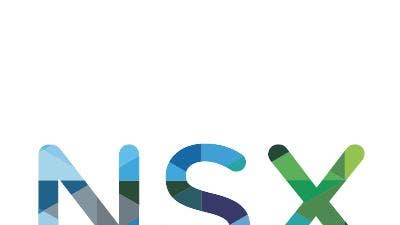VeloCloud Founder Sanjay Uppal On VMware Integration, The NSX SD-WAN Strategy, And Making The Network Affordable
Sanjay Uppal is in the midst of guiding his company through integration with VMware and the wider Dell Technologies family. He spoke with CRN about VeloCloud's momentum after his company was acquired earlier this year.

Branching Out
For VeloCloud founder Sanjay Uppal, there's only one way for the SD-WAN pioneer to go as part of VMware. Up.
"We were a small company, and despite the fact that we were No. 1 in the space, it has really picked up since VMware acquired us," Uppal said in an interview with CRN during the Dell Technologies World conference in Las Vegas.
Uppal, now vice president and general manager of the VeloCloud business within VMware, is in the midst of guiding his company through integration with VMware and the wider Dell Technologies family. That integration starts with the company's go-to-market strategy, and Uppal expects VMware's large channel operation to significantly boost VeloCloud's growth.
Central to the integration efforts is a push to train partners across the VMware-VeloCloud community, Uppal said. Since the acquisition last December, VeloCloud has trained nearly 1,000 people, Uppal said. "Those conversations get translated to conversations we have with businesses out there and translates into more [proof-of-concepts], and more POCs leads to more business," he said.
What follows is an edited excerpt of Uppal's conversation with CRN.

What kind of traction has VeloCloud gained in the market since being acquired by VMware?
It's been about four-and-a-half months since the acquisition, and we've been pretty busy doing a few things. The first is integrating with VMware's sales force -- that's the go-to-market integration -- and the broader Dell Technologies family. Then there's the product integration part. From a go-to-market standpoint, there's been a pretty good uptick in what our business has been doing. At VeloCloud, we were a small company, and despite the fact that we were No. 1 in the space, it has really picked up since VMware acquired us.

What goes into the sales integration as far as VMware's sales operation is concerned, as well as its channel operation?
It's really about feet on the street and it's about business relationships. This is infrastructure. It's not bought by clicking on the web and putting it in your cart. It's about technology that runs the enterprise. It's a serious part of what the infrastructure contains, and it's about all those relationships. The more we train people, the more feet there are on the street. In the last four-and-a-half months, we've trained close to 1,000 people in using VeloCloud SD-WAN. Those conversations get translated to conversations we have with businesses out there and translates into more [proof-of-concepts], and more POCs leads to more business.
How fast do you think VeloCloud's growth will accelerate over the next year, year-and-a-half?
That's the $64 million question. It's difficult to predict that, but the market is growing by multiples and VeloCloud is growing faster than the market. I can't give a specific number, but certainly we are going to grow faster than we were growing independently as just VeloCloud.
How do you see VeloCloud leveraging VMware's channel?
It's all about partnering. VeloCloud has always been a 100 percent partner-driven company. There's a lot more channel partners that VMware has than VeloCloud did. We have some very strong partners, both on the service provider side, as well as on the traditional channel side. Both of those partners are expanded with VMware. VMware has literally tens-of-thousands of partners in the channel. They have defined channel programs that we are now fitting under. We're also continuing our relationships with the service provider partners because practically half of our business comes from the service provider channel. Both VARs and MSPs on the one hand and service providers on the other are greatly expanded with VMware.

What makes SD-WAN an important move for a VAR or an MSP?
The movement in the last decade has been about moving to the cloud, on-premises IT moving to the cloud because customers and enterprises want to concentrate on the core of their business, whether it's selling more hotel rooms, or suits or auto parts. That's the business they want to be involved in. When it comes to that, the reason why VARs and MSPs would find this not just interesting, but compelling to do, is because now VARs want to become managed service providers, and MSPs want to add more to their portfolio. SD-WAN, particularly the cloud-delivered version that VeloCloud has, is about taking what's physical on the customer's premise and turning it into a service that is virtual, in the cloud. That fits really well with the MSP model and with those VARs that want to provide services.

How do you see VeloCloud fitting into VMware's NSX strategy, and more widely into the overall Dell Technologies strategy?
It's all about cloud and virtualization. The No. 1 company in virtualization, of course, is VMware. They started off looking at data center networking, and what VeloCloud allows them to do is expand that out to all the ends of enterprise where all the branch locations are. NSX is really strong in the data center. The announcement you saw this morning was about NSX data center, NSX cloud and now NSX SD-WAN by VeloCloud all fitting in the same family. You add one more piece to that, which is NSX Hybrid Connect, which allows workloads to transition from the private data center to the public cloud. Now we have one platform and one way of looking at all the analytics and fitting it all together. From a Dell Technologies standpoint, the other assets that come to the table are Dell EMC with their hardware because Dell EMC has made a decision to be in the SD-WAN business from a hardware and infrastructure standpoint. VeloCloud becomes a preferred SD-WAN provider from a software perspective for Dell. The other pieces Dell EMC brings to the table is Pivotal Container Service because workloads are also containerized, and SD-WAN has got to support them, as well. The other parts of the family, including security with RSA, are also what we're looking to integrate in the future.

SD-WAN has been around for a little while. What makes now so important? Why is it gaining so much traction now rather than five years ago?
It's a very curious confluence of trends that happened that got SD-WAN started a few years ago. One of the main trends was that there was an inflection point in the number of services that moved to the cloud. These are workloads moving to the cloud. Even five years ago, there was a lot of reluctance. People thought cloud wasn't good enough from a performance and security standpoint. Once the workloads started moving to the cloud and the Internet became good enough to run business on, those were the two aspects that drove the timing of what has happened with SD-WAN. We called it next-generation WAN, or cloud WAN. Once the workloads transitioned to the cloud, we had this hybrid connect issue that came up. You couldn't send all your traffic back to the data center. That didn't make sense. There were increases of traffic required because the applications were becoming a lot more media-enabled. The last piece that came in was IoT. IoT is still at a fairly early stage, but if you think of a typical branch office in a company, you could have five users in it, and you could have 500 sensors. You could run those on the same network. That drove the growth of SD-WAN starting a few years ago.

Customers want to do those things, but they want to do them affordably, and that's part of the equation, too, isn't it?
Absolutely. If you tried to set up a different network for each class of applications that you had, or if you tried to take all of your networking traffic and tried to send it back to the data center, or if you tried to have IT people at every one of your branch office locations – which is required if you have custom, proprietary hardware devices with their locked-in software – all of that doesn't scale. You literally have to spend much more of your budget on networking than you had planned. Growth is impeded if you do it that way. If you do it the VeloCloud way, then, of course, the services are running in the cloud. The service provider runs it as a service and you can concentrate on your core business, do it much more affordably and you can roll out applications as you want to.
How many customers do you have now and where do you see that number going over the next couple of years?
We announced this morning that we have crossed 2,000 customers. I can't specifically pin how many we will grow to, but certainly we are growing faster than the market at this point.

What do you want to get from your channel partners that maybe you're not getting today?
Channel partners are an integral part of our go-to-market strategy. What I would like from channel partners is to really partner with us on the training. This is new technology, and it's something that we have to help the enterprise adopt. If the partners would work with us on the training, and it's a back-and-forth, then I think it would accelerate how this market grows and we can get the transition done much faster than we would just simply on our own. It's all about training, training, training.